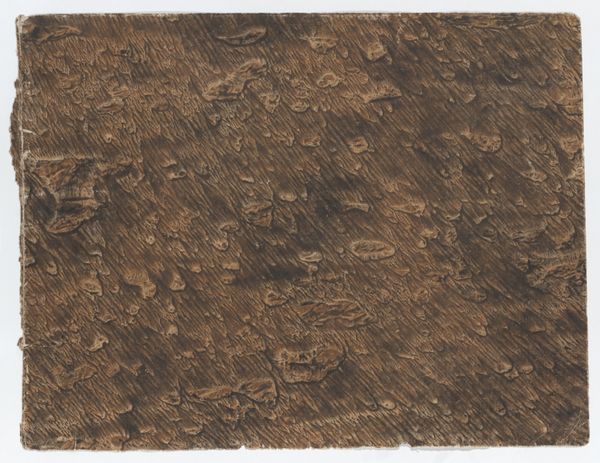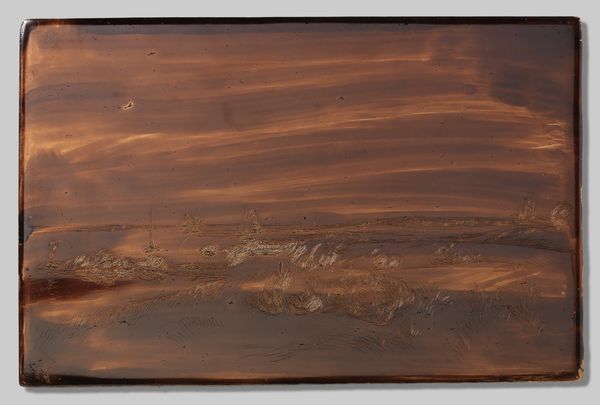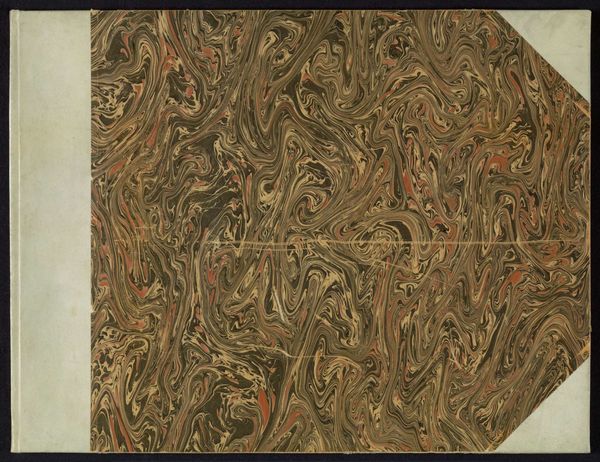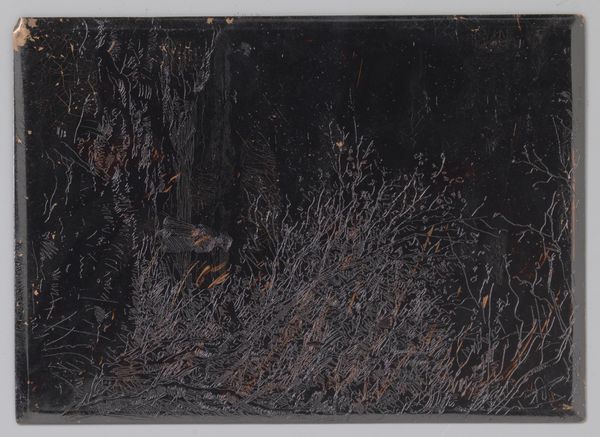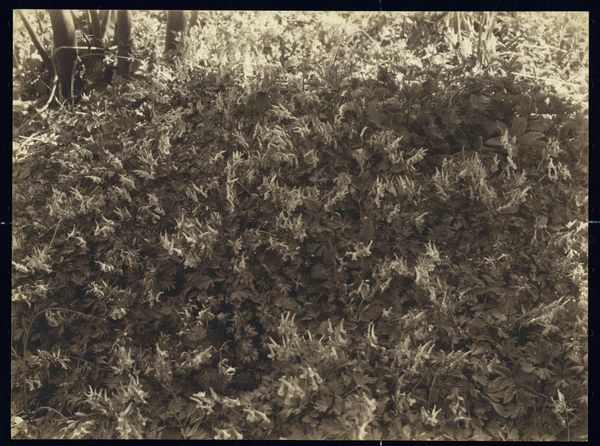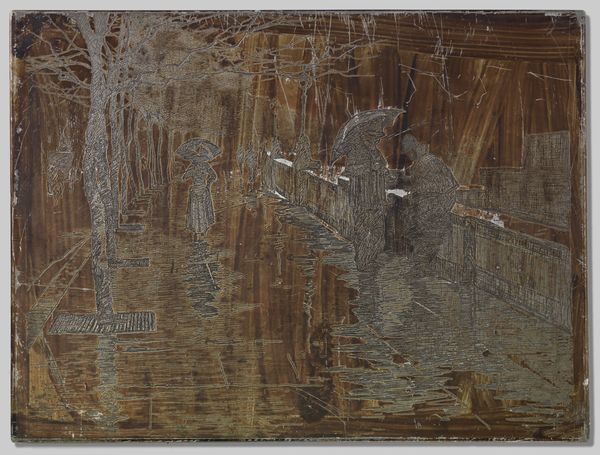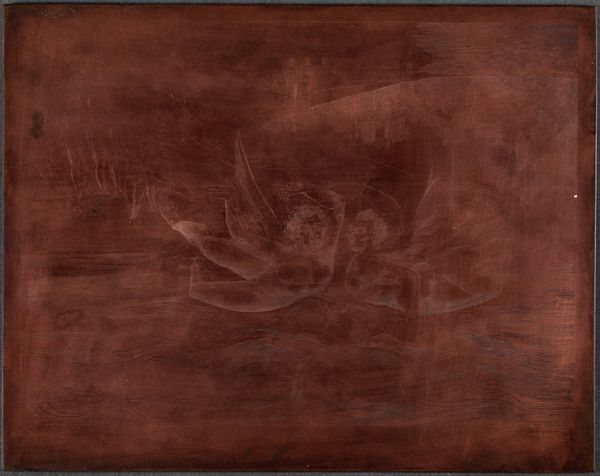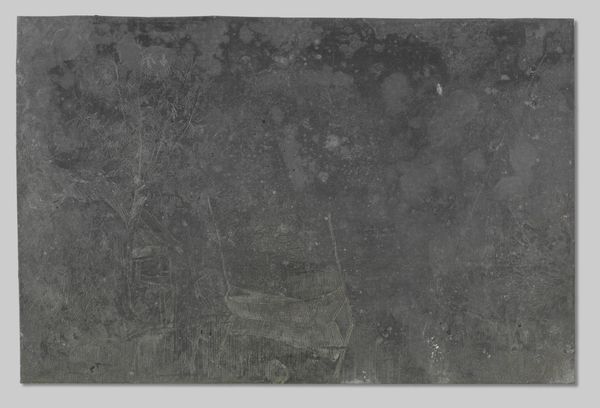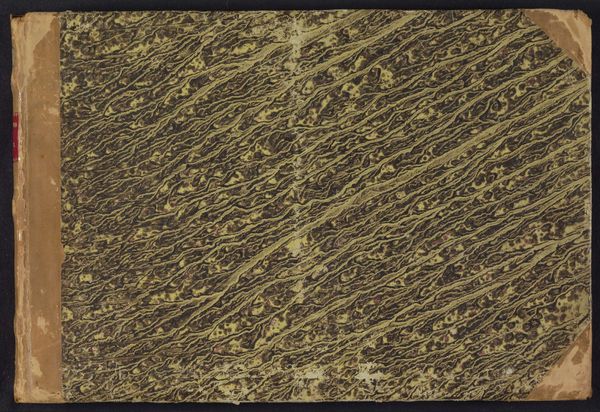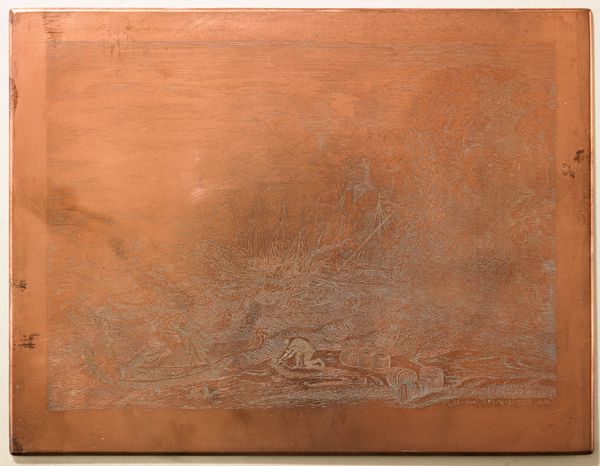![Mahana Atua (Day of the Gods) [recto] by Paul Gauguin](/_next/image?url=https%3A%2F%2Fd2w8kbdekdi1gv.cloudfront.net%2FeyJidWNrZXQiOiAiYXJ0ZXJhLWltYWdlcy1idWNrZXQiLCAia2V5IjogImFydHdvcmtzLzU1MzZjYzA5LWEyZTktNGNiMS05OTIyLThhYjgxNTUwOTlkZi81NTM2Y2MwOS1hMmU5LTRjYjEtOTkyMi04YWI4MTU1MDk5ZGZfZnVsbC5qcGciLCAiZWRpdHMiOiB7InJlc2l6ZSI6IHsid2lkdGgiOiAxOTIwLCAiaGVpZ2h0IjogMTkyMCwgImZpdCI6ICJpbnNpZGUifX19&w=3840&q=75)
print, woodblock-print, woodcut, wood
#
natural stone pattern
#
naturalistic pattern
#
narrative-art
# print
#
figuration
#
woodblock-print
#
organic pattern
#
woodcut
#
symbolism
#
wood
#
natural texture
#
post-impressionism
#
organic texture
Dimensions: block: 18 × 20 × 2.54 cm (7 1/16 × 7 7/8 × 1 in.)
Copyright: National Gallery of Art: CC0 1.0
Curator: This is Paul Gauguin's woodcut, "Mahana Atua," which translates to "Day of the Gods," created in 1894. It's fascinating to observe the tactile quality and graphic directness within the work. Editor: My immediate impression is one of somber mystery. The limited color palette and deeply carved lines lend a primal, almost archaeological feel to the scene. It's not immediately inviting, but demands to be understood on its own terms. Curator: Exactly. The raw aesthetic is significant, given Gauguin’s interest in representing what he perceived as a more authentic, "primitive" culture in Tahiti. The rough woodcut technique contrasts sharply with academic painting of the time, reflecting his desire to break away from Western artistic conventions and bourgeois values. Editor: So, the primitivism becomes a rejection of academic artifice, but carries with it a complex relationship to cultural appropriation and romanticized exoticism. How does the social history of colonialism inform our reading of the work today? Is this image part of the visual machinery of colonialism, however unintentionally? Curator: Absolutely. That's crucial to acknowledge. While Gauguin believed he was celebrating Tahitian culture, he was also, in many ways, constructing a version filtered through a Western lens. We see the figures engaging in rituals— perhaps related to creation myths, if we are to interpret "Atua" literally—but their meaning becomes inevitably intertwined with Gauguin’s own artistic and philosophical concerns. This piece needs to be examined alongside writings about the colonial project. Editor: Looking at the composition, the arrangement of figures seems deliberate. The looming deity at the center, flanked by other characters enacting some sort of ceremonial scene. It seems staged, in a way, furthering that feeling of distance and interpretation. Curator: Indeed. Gauguin sought to create a visual language rooted in symbolism and suggestion rather than direct representation. Consider, too, the flattened space and the rhythmic patterns created by the wood grain; they enhance the spiritual aura and sense of timelessness. It pushes beyond a single read. Editor: I now come away understanding the complex layering of the visual language Gauguin sought to establish and am still processing its difficult history. Curator: Indeed. Art serves as a bridge between different perspectives. Thanks for the rich exchange of perspectives.
Comments
No comments
Be the first to comment and join the conversation on the ultimate creative platform.
